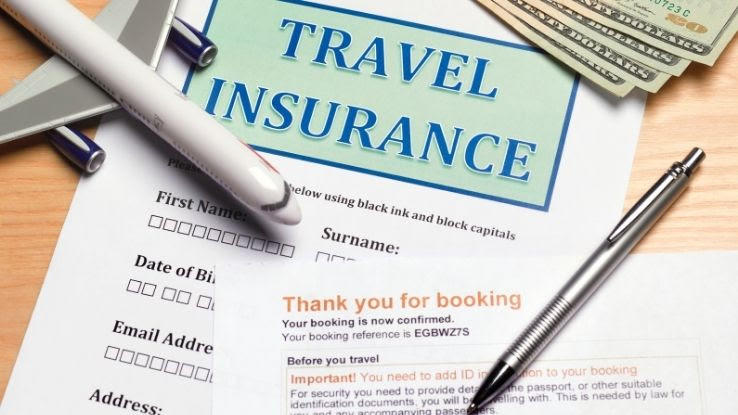Pacific Prime Things To Know Before You Buy
Pacific Prime Things To Know Before You Buy
Blog Article
Pacific Prime for Beginners
Table of Contents9 Easy Facts About Pacific Prime ExplainedThe smart Trick of Pacific Prime That Nobody is DiscussingThe Best Guide To Pacific Prime7 Simple Techniques For Pacific PrimePacific Prime Can Be Fun For Everyone

This is because the data were accumulated for a period of solid economic efficiency. Of the estimated 42 million people that were without insurance, all but concerning 420,000 (about 1 percent) were under 65 years old, the age at which most Americans become qualified for Medicare; 32 million were grownups between ages 18 and 65, around 19 percent of all grownups in this age group; and 10 million were kids under 18 years old, regarding 13.9 percent of all youngsters (Mills, 2000).
These estimates of the number of persons uninsured are produced from the yearly March Supplement to the Existing Populace Survey (CPS), conducted by the Census Bureau. Unless otherwise noted, national quotes of individuals without health insurance and percentages of the populace with different kinds of coverage are based on the CPS, the most extensively used source of estimates of insurance coverage and uninsurance rates.
The Pacific Prime Ideas

Still, the CPS is specifically beneficial since it generates yearly quotes relatively swiftly, reporting the previous year's insurance policy protection estimates each September, and due to the fact that it is the basis for a constant collection of quotes for greater than two decades, permitting evaluation of trends in protection over time. For these factors, as well as the comprehensive use of the CPS in various other researches of insurance coverage that are presented in this report, we depend on CPS quotes, with restrictions noted.

The estimate of the variety of without insurance people broadens when a population's insurance status is tracked for numerous years. Over a three-year period beginning early in 1993, 72 million people, 29 percent of the U.S. https://www.gaiaonline.com/profiles/pacificpr1me/46638741/. population, were without coverage for at the very least one month. Within a single year (1994 ), 53 million people experienced at least a month without insurance coverage (Bennefield, 1998a)
6 out of every ten uninsured grownups are themselves utilized. Working does improve the possibility that one and one's family members will have insurance coverage, it is not a guarantee. Also members of households with two permanent wage earners have almost a one-in-ten opportunity of being without insurance (9.1 percent uninsured price) (Hoffman and Pohl, 2000).
The Ultimate Guide To Pacific Prime
New immigrants account for a considerable percentage of people without health and wellness insurance. One analysis has actually connected a significant part of the current development in the size of the U.S. without insurance population to immigrants that arrived in the country between 1994 and 1998 (Camarota and Edwards, 2000). Recent immigrants (those who involved the United States within the past four years) do have a high rate of being uninsured (46 percent), however they and their youngsters account for just 6 percent of those without insurance policy across the country (Holahan et al., 2001).
The relationship between medical insurance and accessibility to care is well established, as documented later in this chapter. Although the connection in between health and wellness insurance coverage and wellness end results is neither straight nor straightforward, a comprehensive scientific and health and wellness solutions research study literary works links health and wellness insurance policy protection to better accessibility to care, far better top quality, and boosted personal and populace health and wellness condition.
Degrees of analysis for checking out the impacts of uninsurance. It concentrates particularly on those without any health and wellness insurance policy for any type of length of time.
The Ultimate Guide To Pacific Prime
The problems websites encountered by the underinsured are in some areas similar to those faced by the uninsured, although they are usually much less serious. Health insurance, nonetheless, is neither necessary neither adequate to acquire access to clinical services. The independent and direct effect of health and wellness insurance protection on access to health solutions is well established.
Others will certainly acquire the health and wellness care they need even without wellness insurance coverage, by paying for it out of pocket or seeking it from suppliers who use care totally free or at very subsidized prices. For still others, wellness insurance coverage alone does not ensure invoice of care due to various other nonfinancial obstacles, such as a lack of healthcare service providers in their neighborhood, restricted access to transport, illiteracy, or linguistic and social distinctions.
What Does Pacific Prime Mean?
Formal research study concerning without insurance populations in the United States dates to the late 1920s and early 1930s when the Board on the Price of Healthcare created a series of records about financing doctor workplace visits and hospital stays. This problem ended up being prominent as the numbers of clinically indigent climbed up throughout the Great Depression.
Report this page